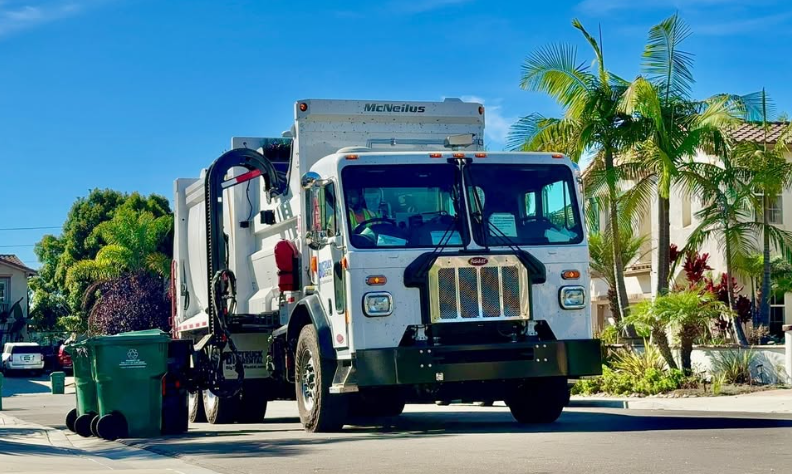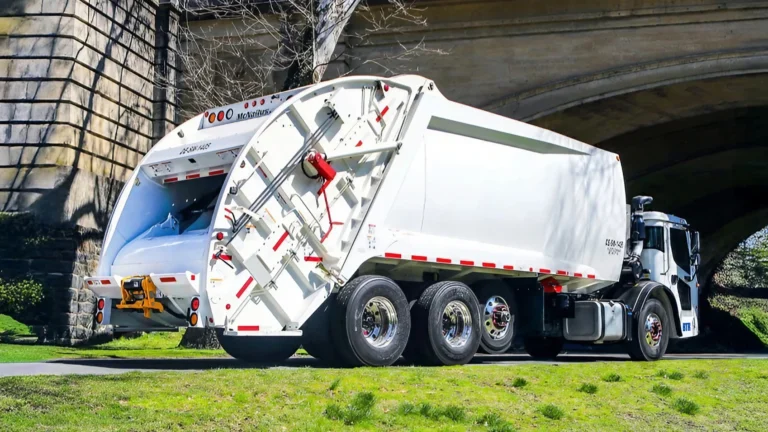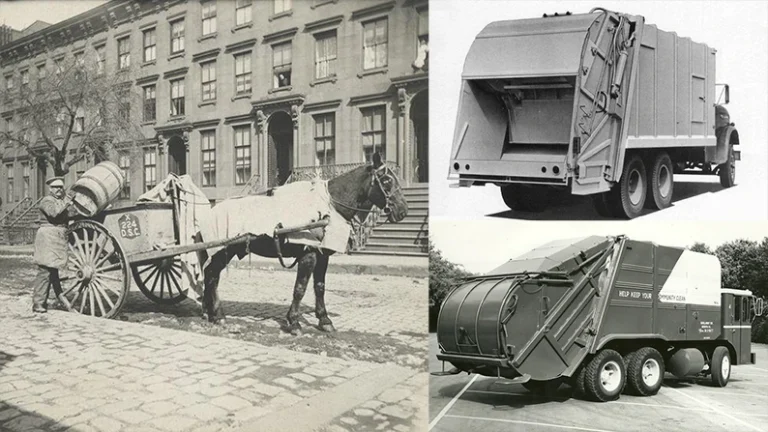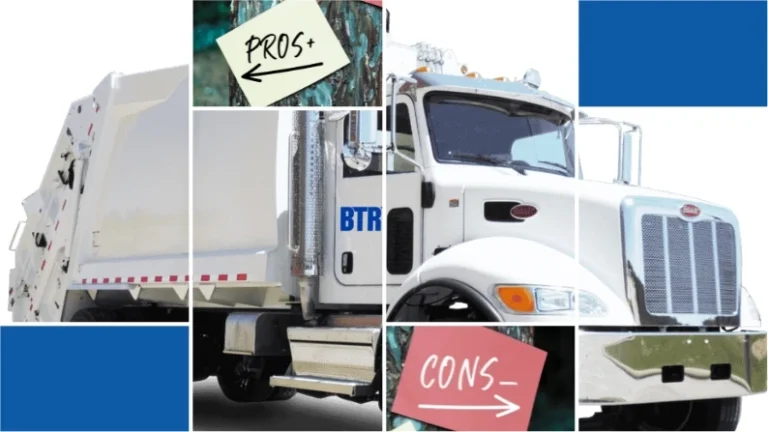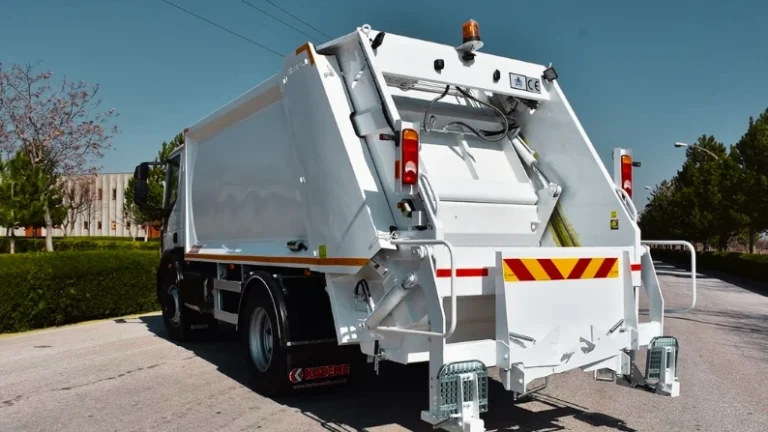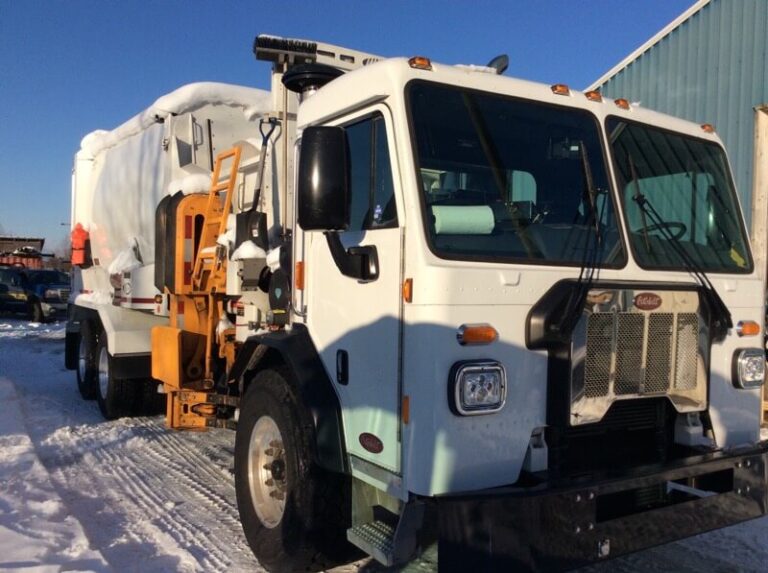Safety is one of the biggest concerns in waste collection. While traditional rear loaders have long been the workhorses of residential waste collection, automation has allowed the industry to improve both safety and efficiency. Automated side loaders take this step further, developed to reduce these risks by keeping operators in the cab and limiting physical strain.
At Big Truck Rental, we know that safety is at the heart of every waste collection route. In this blog, we’ll talk about how safety has changed from traditional rear loaders to automated side loaders and why it matters for keeping collection operations safer and more efficient.
Rear-Loader vs Automated Side Loader
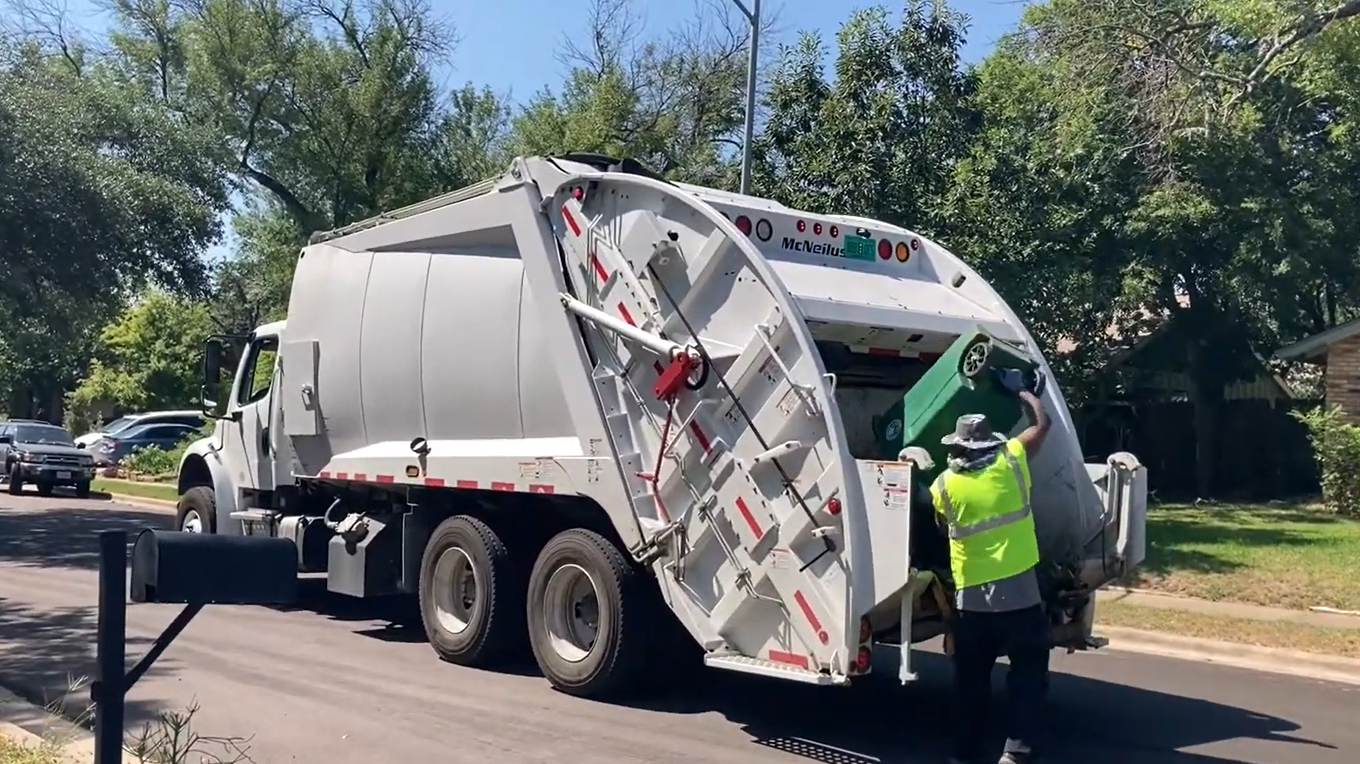
- Rear-Loader (Traditional): A truck with a hopper/receptacle in the back. Requires a crew of two or three people, with one or two workers on foot to haul bins to the back of the truck and manually load/throw garbage, often involving lifting, bending, and walking behind the truck.
- Automated Side Loader (ASL): Uses a hydraulic arm on the side of the truck, operated from inside the cab, to grab standardized bins, lift them, dump contents into a hopper, and then continue. Reduces (or eliminates) the need for crew members to exit the cab for each stop.
Safety Challenges of Traditional Rear-Loader Trucks
Rear-loader trucks are probably the most iconic design of garbage trucks. The traditional rear loader has been on the job for the better part of a century, but the way it works puts crews at safety risk. Here are some of the most common risks:
- Struck-by accidents: Workers often ride on the back of the truck or walk in the street to pull bins to the hopper. This exposes them to cars, which makes being struck by accidents a major hazard.
- Musculoskeletal injuries: Lifting and moving heavy bins repeatedly can lead to sprains, strains, and back injuries. This repetitive motion is one of the most significant health concerns for waste workers.
- Crushing hazards: The rear compactor has powerful blades and moving parts. A small mistake or slip can pose a significant risk of crushing injuries.
- Biohazard exposure: Rear-loader crews handle trash directly, increasing the risk of contact with sharp objects, chemicals, or needles.
- Slips, trips, and falls: Workers constantly jump on and off the truck. Add rain, ice, or uneven ground, and the risk of falls increases rapidly.
How Automated Side-Loader Trucks Improve Safety
Automated side-loader trucks were designed to address these issues. They reduce or completely remove many of the daily risks that waste workers face.
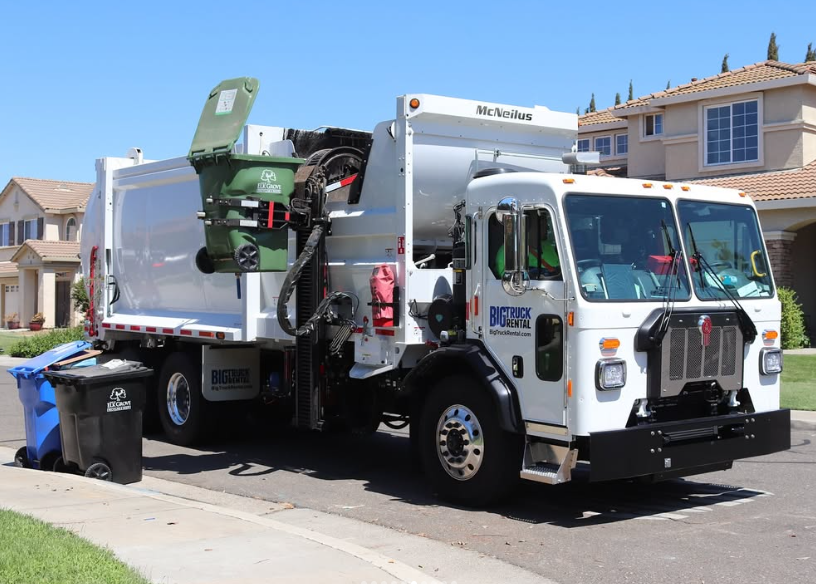
- The operator stays inside the cab: The biggest safety improvement is a simple one. The operator doesn’t have to get out of the truck at all. Staying inside protects them from traffic, weather, and unsafe surfaces.
- Robotic arm reduces lifting strain: The hydraulic arm on an ASL does all the lifting and dumping. No more bending, hauling, or tossing heavy bins by hand. This significantly reduces the risk of back and joint injuries.
- Improved visibility: Many ASLs feature cameras and sensors that provide the driver with a clear view of the street and pickup area. This makes it easier to avoid accidents.
- Advanced safety systems: Features such as emergency stop buttons, safety interlocks, and joystick controls provide the operator with precision and added protection.
How Big Truck Rental Helps Promote Safety
At Big Truck Rental, our modern rear loader garbage trucks are designed with safety in mind. They feature dual emergency stop buttons that can instantly halt the compactor or hydraulic lift arm, backup cameras to help operators spot people and objects when reversing, and safety decals that remind bystanders to maintain a safe distance, making key parts of the truck more visible. We provide more detailed information about these protections in our guide on rear loader garbage truck safety.
For operations seeking to reduce manual lifting and time spent outside the cab, our side-loader garbage trucks provide a significant safety advantage. Operators can manage pickups from inside the truck, supported by cameras and hydraulic systems that reduce physical strain and exposure to the road. We’ve shared a closer look at these truck safety features in our post on side loader garbage truck safety.
Final Thoughts
Safety from traditional rear-loader trucks to automated side loaders can offer major safety improvements, reducing the risk of injury, exposure, and accidents. But it’s not an “everywhere solution.” The best safety outcomes come when the right truck is matched to the route, container standardization is in place, operators are well trained, and safety features are fully leveraged.
Explore Safer Truck Options with Big Truck Rental
At Big Truck Rental, we offer a range of modern truck types, including rear loaders and automated side loaders, all designed with safety in mind. If you want to improve safety on your collection routes while maintaining efficiency, our team can help you find the right truck for your operation.
Request a quote or contact us today to discover how our fleet can enhance waste collection safety for your operation.
FAQs
How do automated side loaders improve safety compared to rear loaders?
Automated side loaders allow operators to handle pickups from inside the cab, reducing exposure to traffic and minimizing physical strain. Built-in cameras, hydraulic arms, and in-cab controls help prevent accidents while limiting the need for multiple crew members on the ground.
Are modern rear loaders from Big Truck Rental safe to use?
Yes, Big Truck Rental’s modern rear loaders are designed with safety as a priority. They come equipped with dual emergency stop buttons, backup cameras, and safety decals to protect operators and bystanders. These trucks provide a safe and reliable solution for a variety of collection routes.
Do I need additional crew members to operate a side loader safely?
Most side loaders can be operated by a single driver, reducing the number of crew members exposed to hazards. For challenging routes or unusual situations, having a spotter can still enhance safety.
